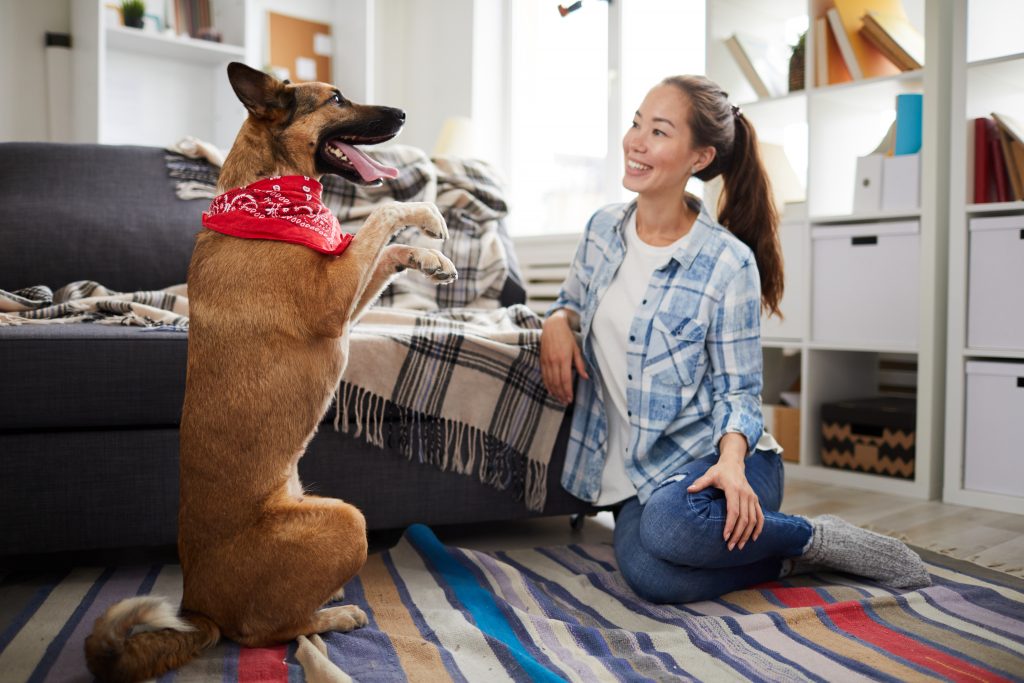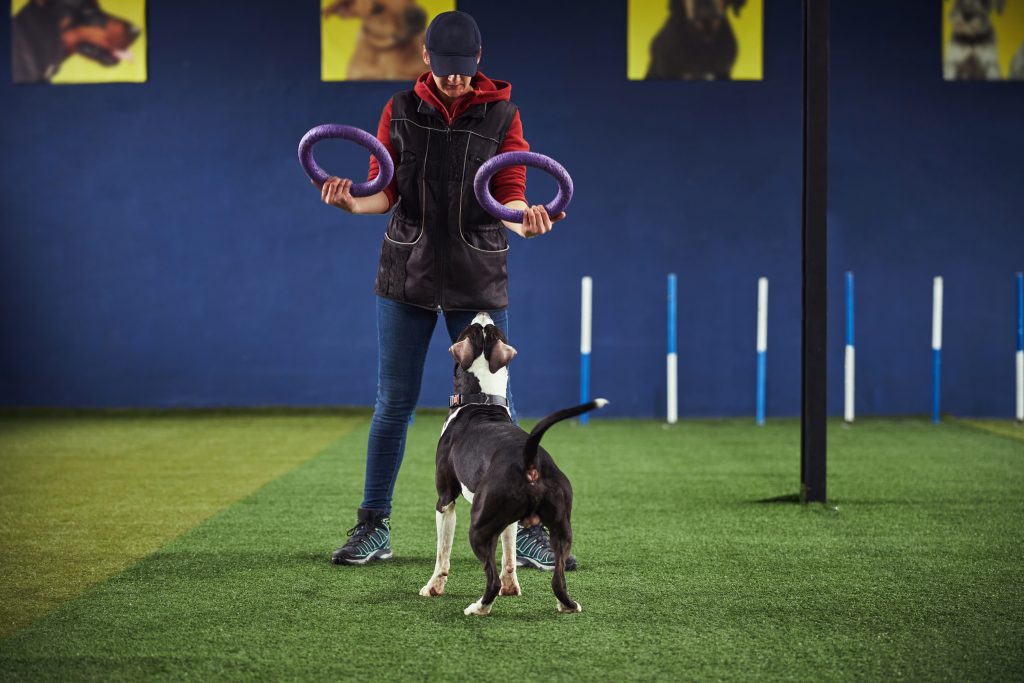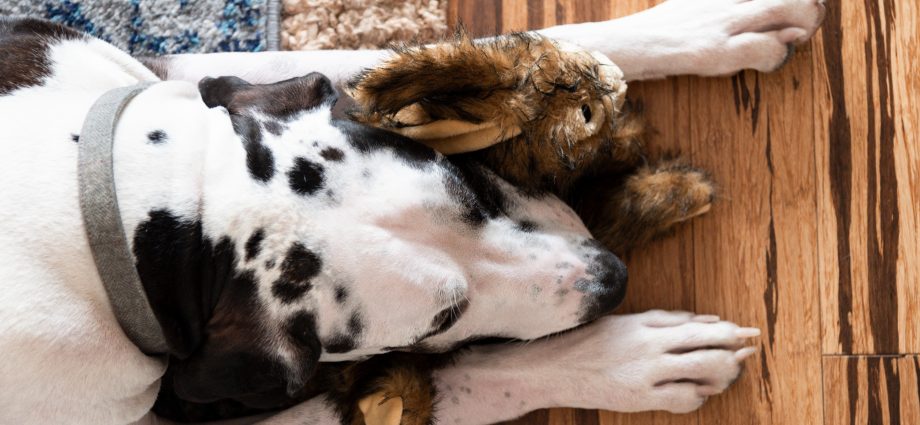Are you tired of coming home to destructive behavior, excessive barking, or the sound of your furry friend’s panic attack? Separation anxiety is a common issue for dogs, leaving many pet owners feeling frustrated and unsure of how to help their companions. Fortunately, there are effective strategies to help train dogs struggling with separation anxiety. Seeking guidance from veterinary behaviorists, and utilizing positive reinforcement and gradual desensitization techniques can make a huge difference. Additionally, providing a safe space for your pup through crate training and maintaining consistency in their daily routine can help ease their anxiety. With the right training and support, you can help your furry friend live a happier, stress-free life.

1. Start with Basic Obedience Training
If your furry friend is experiencing separation anxiety, one effective approach to curb their anxious behavior is to start with basic obedience training for dogs. This kind of training lays a solid foundation for teaching your dog good behavior and making good choices. A well-trained dog is more likely to be comfortable in their environment and less likely to act out with destructive behavior when left alone.
Basic obedience training can also form the basis for other training techniques, such as desensitization. By teaching your dog basic obedience, you’ll be creating a structure and framework for more advanced training.
During basic obedience training, the focus should be on teaching your dog how to be comfortable with their environment and how to behave calmly on the leash. Also, it’s important to train them to keep some attention on their owner when outside the home. This will help your pet to feel more secure and less anxious when they are alone.
Consistency is the key to success when it comes to any obedience training, including training for separation anxiety. Establishing a daily routine will help your dog feel more at ease and comfortable in their environment. By maintaining a consistent schedule and reinforcing positive behaviors, you can help your pet overcome their anxiety and create good habits that will serve them well in the long run.
2. Gradual Desensitization
If your dog has separation anxiety, gradual desensitization can help them feel more comfortable and secure when left alone. This training relies on baby steps and incorporates multiple short training sessions, gradually incorporating more stimuli that can make the dog anxious.
The aim of gradual desensitization is to train the dog’s brain to recognize that being alone is a normal and positive experience. It is essential to follow a specific protocol to ensure your dog does not experience overwhelming anxiety during the process. Here’s how to train your dog gradually:
Step 1: Start with Short Time Periods
Begin with leaving your dog alone for a very small period of time, like five or ten minutes. Make sure your dog is in a safe and comfortable area, like their crate, with some toys. Reward your dog with a treat when you return.
Step 2: Increase the Time Periods Gradually
After every training session, increase the duration of time that your dog spends alone by five to ten minutes until they can stay alone for an hour without any signs of separation anxiety.
Step 3: Include More Stimuli
When your dog is comfortable staying alone for an hour, start adding more stimuli that make them anxious. For instance, put on your shoes, pick up your keys, and open the door. Wait outside for a couple of minutes and then come back inside. This will teach your dog that these stimuli do not always signify a long period of absence.
Step 4: Pause and Avoid Excessive Attention
It’s important to pause for at least a minute between steps to give your dog time to calm down. Avoid giving your dog excessive attention during pauses, as it can reinforce anxious behavior.
Step 5: Work Until Your Dog Can Stay Alone for Extended Periods
Training your dog to tolerate being alone for extended periods of time requires a process called desensitization, which may require a significant amount of time and effort, but can ultimately be successful.
3. Provide a Safe Space for Your Dog with Separation Anxiety
If you have a dog with separation anxiety, creating a safe space can help to reduce their stress levels when they are alone. A safe space is a dedicated area or room in your house where your dog can feel secure and relaxed while you are away. Here are steps to provide your dog with a safe space:
1. Choose the Right Location
The location of the safe space is critical. It should be a quiet and peaceful place in your home where your dog can retreat when they feel anxious. A spare bedroom or laundry room can be ideal locations for a safe space. You can also go for a crate, which is a perfect solution if your dog is already accustomed to using one.
2. Ensure the Area is Safe
Ensure the safe space is free of items that could cause your dog harm or stress. Remove hazardous items, including sharp objects, cables, and choking hazards. The space should also be free from anything that could distress your dog, like loud music or TV.
3. Create a Comfortable Environment
Make the safe space comfortable by adding soft bedding, toys, and, if possible, leave an item with your scent. Your scent will help your dog feel calm and secure, especially in your absence. The bedding should be comfortable, and your dog’s favorite toy can help to calm them down and distract them.
4. Consistency in Routine
Establishing a consistent daily routine is an effective strategy for helping dogs with separation anxiety. This can have a calming effect on them and alleviate their anxiety.
Here are some steps to establish a consistent daily routine for your dog with separation anxiety:
1. Setting a Feeding Schedule
Start by setting a specific time for your dog’s meals and stick to it every day. Dogs should be fed at least twice a day, ideally in the morning and evening. This routine will help your dog have a better sense of what to expect each day.
2. Regular Potty Breaks
Offering your dog potty breaks at regular times throughout the day can help create a sense of routine and predictability. Take your dog outside first thing in the morning, after meals, and before bed.
3. Walking Routines
Taking your dog for a walk should also become a regular part of their daily routine. Ideally, dogs should be walked in the morning and evening, depending on their energy levels. Regular exercise can help release stress and anxiety in your dog.
4. Consistency is Key
Ensure that you or a family member takes out the dog at the same time each day. This shows the dog the consistency and predictability of the routine. Also, remember to feed them after a walk.
5. Give Every Person in the Home Instructions
To maintain consistency in routine, give instructions to every person in the home on what to do and when to do it, so the dog can predict the outcome of their behavior.
5. Seek Professional Help
If your furry friend is experiencing severe separation anxiety, it’s important to seek professional help to ensure an effective treatment plan. This is where clinical animal behaviorists or veterinary behaviorists come in.
These professionals have undergone specialized training and are qualified to diagnose and treat severe separation anxiety in dogs. They will thoroughly examine your dog’s medical history, behavior patterns, and environmental factors to develop a personalized treatment plan.
The treatment plan can include a combination of behavior modification techniques, medication, and natural remedies. The aim is to help your dog feel more comfortable and relaxed when separated from their owner or caretaker.
Behavior modification techniques may include desensitization and counter-conditioning exercises, which will help your dog associate positive experiences with being alone. Medication may be necessary in some cases to help manage your dog’s anxiety levels and help them cope better with being alone.
With the help of a clinical animal behaviorist or veterinary behaviorist, you can develop a customized treatment plan for your furry friend. This will ensure that your dog receives the appropriate care and resources needed to overcome their separation anxiety.

Conclusion
In conclusion, seeking professional help is essential when dealing with canine separation anxiety. Certified Separation Anxiety Trainers (CSATs), Board Certified Veterinary Behaviorists, and veterinarians are qualified professionals who can offer expert advice and customized behavior modification plans for dogs with separation anxiety. These professionals will thoroughly examine your dog’s medical history, behavior patterns, and environmental factors to develop a personalized treatment plan. Proper behavior modification techniques, medication, and natural remedies may also be recommended. With their guidance, your dog can learn to feel more comfortable and relaxed when separated from their owner or caretaker. So, don’t wait for the situation to worsen, and seek professional help as soon as possible.
